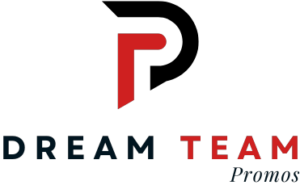Modern workplaces are no longer confined to traditional office cubicles and fixed seating arrangements. Hot desking benefits are increasingly clear as businesses focus on agility, collaboration and efficiency. It’s a modern and flexible approach to an office setup, allowing employees to choose their workspace every day, which encourages a more interactive field of work. Businesses that adopt this mindset see greater productivity, better collaboration and increased employee morale.
Flexible workstations have become a go-to solution in this age of hybrid and remote work, weighing the balance between streamlining office space and employees’ new needs. Hot desking is also considered among workplace efficiency and motivation when implemented by organizations that have employee engagement strategies in place, based on autonomy and collaboration.
The Productivity Gains of Hot Desking
Hot desking is best known for increasing productivity. It is a reality that employees that have the option to choose a workspace based on the tasks of the day, are more productive. A quiet area is great for getting work done, while a collaborative space can facilitate brainstorming and teamwork. At the same time, companies can truly honor their employees’ diverse work styles and preferences by letting go of the constraints of assigned seating.
Hot desking also helps reduce distractions in the office. Employees are subject to moving around every day which means they cannot be in a fixed desk, and so they do not have the habit of prolonged socialization. This adjustment helps people reinforce concentration and time management, resulting in quantifiable advances in what work comes out.
Hot Desking Benefits for Employee Engagement
The benefits of hot desking go further than productivity and also help enhance employee engagement. Implementing flexible work policies puts the ownership and accountability in the hands of the employees, who feel empowered to choose how and when they work. Such independence increases job satisfaction and motivates one to participate actively in tasks at work.
In addition, hot desk encourages interaction between team members from different departments. Rotating seating arrangements means employees interact with their colleagues they might never work with. Encouraging collaboration across departments and sharing knowledge, creativity, and strengthening relationships in the workplace.
The Role of Flexible Workstations in the Modern Office
To complement hot desking and ensure its success, organizations should provide adaptable workstations with the required resources. A good hot desking environment comprises:
- Ergonomic Furniture: Chairs and desks that promote good posture and provide comfort during extended work hours.
- Tech-Enabled Spaces: Strong Wi-Fi, docking stations and noise-canceling features to facilitate digital connections.
- Meeting Pods and Collaboration Zones: Areas where groups can come together to brainstorm and discuss ideas.
- Personal Storage Solutions: This could mean lockers or mobile storage units where employees can store their belongings.
With proper workstations, employees can remain productive no matter where they choose to sit, as they will have the tools they need to excel as employees. This flexibility is especially useful in hybrid work models when workers divide their time between the office and offsite.
Employee Engagement Strategies That Complement Hot Desking
Hot desking promotes collaboration but is most effective when combined with well-planned engagement strategies for employees. Companies can further improve the experience by:
- Promoting an Inclusive Workplace: Providing quality workspaces for all employees, regardless of their responsibilities, promotes a sense of inclusion and fairness.
- Enabling Digital Desk Reservation Systems: Giving your employees the facility of booking of desks beforehand prevents confusion and guarantees that someone can make the best use of their preferred workplace.
- Social Hubs: Designing informal lounges, coffee zones or even create some social hubs where employees can network and share ideas.
- Collecting Feedback and Adjusting: Routinely reviewing current employee satisfaction levels with hot desking policies and tweaking them accordingly.
When these strategies are implemented, they become a refreshment for hot desking, making it a tool for engagement and not a source of frustration.
Challenges of Hot Desking and How to Overcome Them
Although hot desking has numerous benefits, it also poses challenges concerning workspace availability, hygiene, and employee adjustment. To mitigate the risks posed by these challenges, organizations must:
- Define clear policies around desk booking, cleaning and etiquette.
- Make sure that there are dedicated quiet areas for employees who need to focus deeply.
- Explore technology to facilitate desk booking and space utilization.
This approach, which goes beyond simply implementing hot desking, allows for effective change management to avoid the pitfalls often associated with hot desking.
Conclusion
While hot desking may seem to be a passing trend, this method of workplace layout is an evolution, aligned with the modern employee’s vision for flexibility and autonomy in their work life. Hot desking benefits combined with investment in flexible workstations can be an absolute game-changer in this regard, facilitating a more agile environment that can further boost productivity and bring focus. This helps in deploying your human resources on the right tracks for the structured organizational growth while keeping employees engaged. With businesses adapting continuously, this concept, when efficiently implemented, will lead to a more proficient and engaged workforce, a well-organized office space, and a culture of innovation, cooperation and teamwork.













